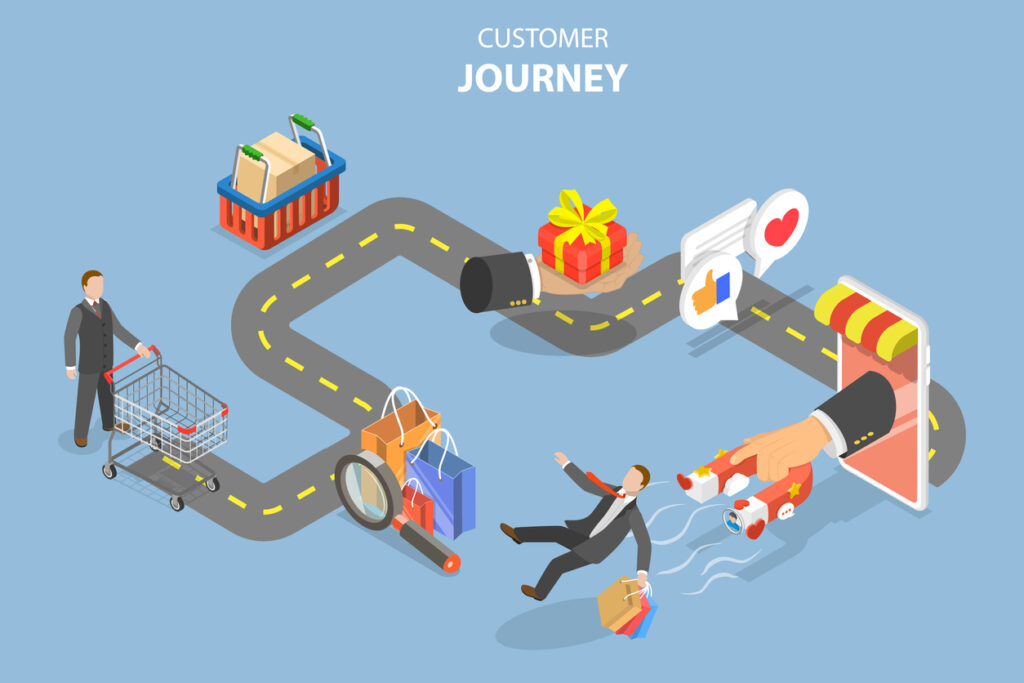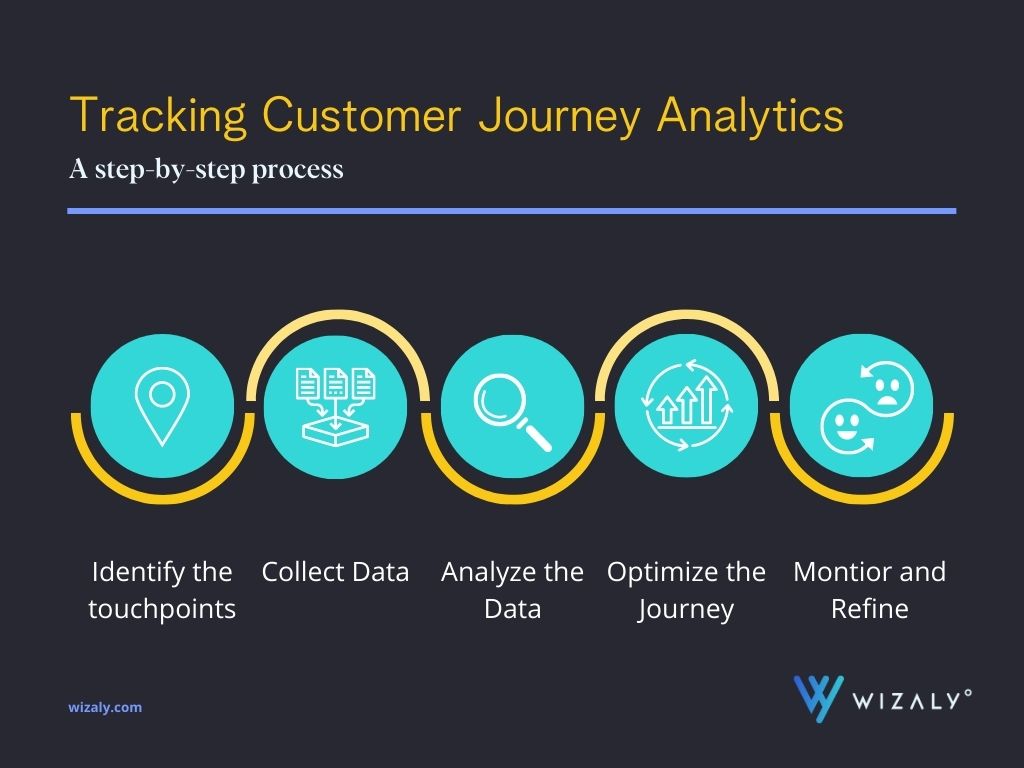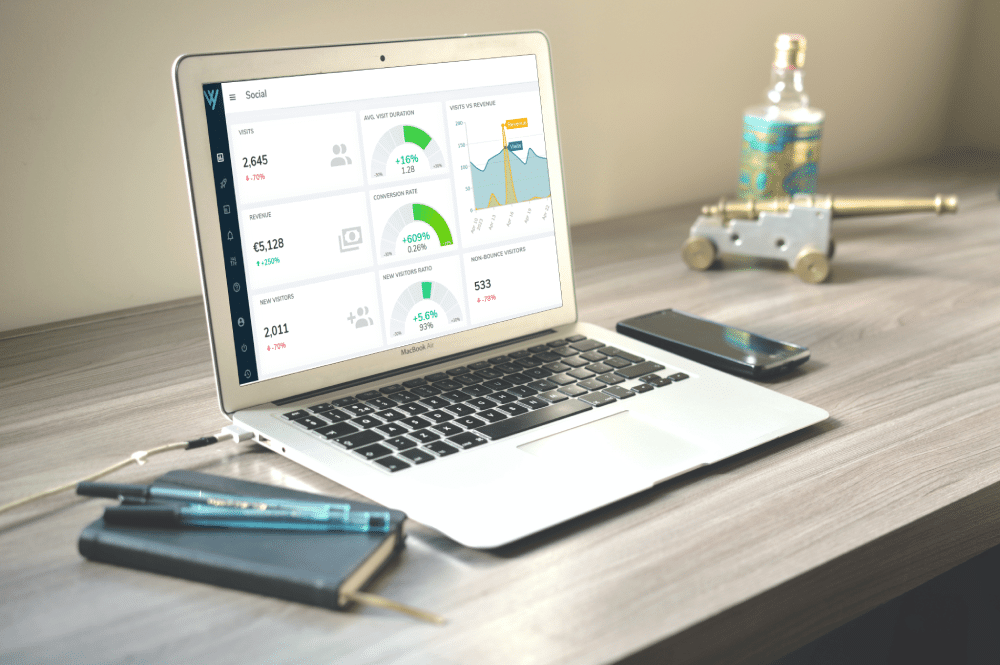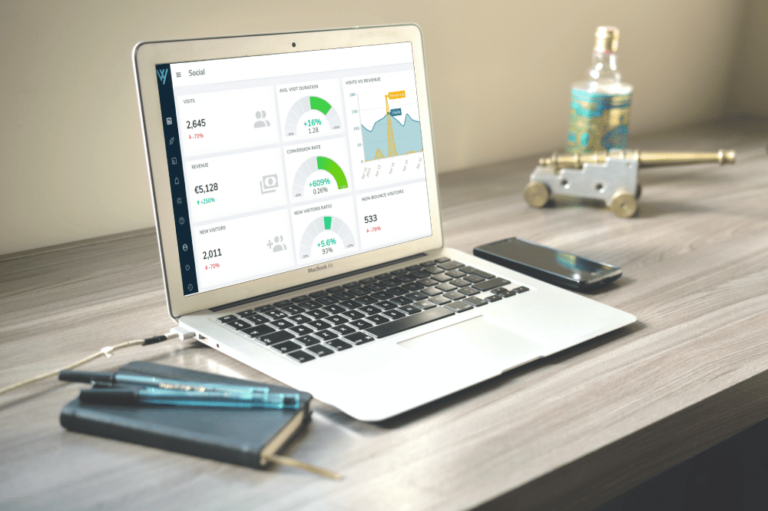
Are you effectively tracking your customers’ journey through your marketing funnel? Here are three questions to ask yourself to find out:
- How are you currently tracking the customer journey, especially your top of funnel? And what tools or methods do you use to do so?
- Can you describe the specific customer journey stages that you are tracking, and how you use this information to inform your marketing strategies?
- What metrics do you use to measure the effectiveness of your customer journey tracking, and how do you analyze and report on this data to make informed decisions about your marketing campaigns?
Understanding and optimizing customer journeys has become an essential aspect of successful marketing. By leveraging cutting-edge tools like Wizaly, marketers can gain insights into data that will enhance the customer experience, and ultimately, drive higher levels of engagement to help you understand how best to allocate your marketing budget.
Benefits of Customer Journey Mapping Tools
Customer journey mapping tools allow you to visualize the whole customer journey, from initial awareness to post-purchase follow-up, and identify areas where you can make improvements. By analyzing behavior at each stage of the journey, you can create a more personalized experience that meets the unique needs and expectations of your customers.
Better understanding of customer needs
Looking at the entire customer journey allows you to see the world from your customers’ perspective and identify where customers might drop off or experience confusion. This insight is invaluable for businesses looking to improve the user journey and create a more seamless and enjoyable experience for customers.
Increased customer loyalty
With this new perspective and insight, you can create a stronger emotional connection with your customers via more targeted ads, engaging content, and better service. This can lead to increased loyalty, as customers are more likely to stick with a business that they feel understands and meets their needs. In fact, returning customers have a 27% higher chance of making a repeat purchase compared to new customers. Additionally, you can create a more personalized experience so customers are more likely to feel valued and appreciated which can further increase loyalty.
Better allocation of resources
By identifying the places where customers are most likely to engage with the business, you can focus resources on those areas. For example, if you find that customers are most likely to engage through social media, you can focus more resources on social media marketing, leading to better leads and an increased return on investment.
Tracking the customer journey to improve your customer experience

We know that when customers have a positive experience with a brand, they are more likely to continue doing business with that company, even if they find cheaper alternatives. In fact, a study by PwC found that 73% of customers point to customer experience as an important factor in their purchasing decisions. By looking at the customer’s journey, marketing leaders can gain valuable insights into how customers interact with the brand to:
- Identify pain points: Keep track of areas where customers may experience difficulty or frustration. By understanding these pain points, you can create a successful customer journey that is smoother for them and more profitable for you.
- Enhance customer engagement: Tailor each interaction to your ideal customer persona helps your brand build stronger relationships with every single buyer, leading to more customer loyalty and advocacy.
- Improve customer satisfaction: When your customers feel seen and valued along the buying journey, they are more likely to trust your brand and, in turn, be satisfied with the product or service they purchase.
- Optimize the customer journey: Since mapping the customer journey helps you see the entire picture of the customer’s experience, you can predict customer behaviors and keep track of customer patterns to make changes accordingly.
Improving customer experience increases customer lifetime value
According to the Customers 2020 report by Walker Information, customer experience will overtake price and product as the key brand differentiator. Customers have become more informed and have higher expectations than ever before — they want personalized experiences that are relevant, timely, and consistent across all channels and platforms. The buying experience can have a significant impact on customer lifetime value (CLV) by creating loyal customers who return for repeat purchases and refer others to your business.
Having the best customer experience is not just about meeting customer needs at the point of sale. It requires a holistic approach that encompasses every part of the journey, including pre-sale, during sale, and post-sale interactions. By understanding the user experience, you can identify frustrations and take proactive measures to address them. This can help create a seamless customer experience that delights customers at every stage.
One way you can improve the customer experience is by leveraging technology to personalize interactions. For example, by analyzing data such as purchase history, browsing behavior, and preferences, businesses can provide personalized product recommendations, discounts, and promotions that are relevant to each individual customer. This can help create a sense of personalization and build a stronger emotional connection with customers, leading to increased loyalty and CLV.
Another easy way your company can improve the customer experience is by providing excellent customer support. This includes not only responding to customer inquiries and complaints quickly but also being proactive in addressing issues before they become problems. You can do this by providing self-service options on your website such as an FAQ section, online chat, or chatbots that can answer common customer questions. It is a good idea to provide customers with multiple channels to reach out to support, such as email, phone, or social media.
And don’t forget to leverage customer feedback to make improvements. Ask them about their experience at various stages to identify areas of improvement and take necessary actions to address those issues. This can help create a culture of continuous improvement and show customers that their feedback is valued, leading to increased loyalty and CLV (and reduced customer churn).
How to use customer journey analytics

To effectively track customer journey analytics, you should follow these steps:
- Identify the touchpoints: Start by identifying all the platforms where customers interact with your brand, such as social media, email marketing, and customer service.
- Collect data: Collect data at each touchpoint, including website behavior, social media engagement, and customer input.
- Analyze the data: Use analytics tools like Wizaly to analyze the data and gain insights into customer behavior and pain points.
- Optimize the journey: Use the insights gained from the data analysis to optimize and improve customer acquisition.
- Monitor and refine: Monitor customer interactions over time and continue to refine the customer journey to ensure that it remains effective.
It is critical for marketing and sales teams to help you identify how potential customers find your business and optimize budgets. By understanding each stage of the journey and using customer insights to tailor marketing efforts, you can create a more personalized and effective experience.
Mapping the customer journey stages
Creating a comprehensive map enables sales and marketing teams to see the whole customer journey from the initial awareness stage to the final conversion. This visual map helps in identifying areas where you may be spending too much money or where you are not able to correctly track the customer journey.
Mapping a customer journey is a crucial process for you to understand your customers’ needs and improve your overall the buying experience. To create the right customer map, first identify the different stages of your marketing funnel, such as awareness, consideration, decision, and loyalty.
Once these stages are identified, gather data on customer behavioral habits and interactions at each touchpoint. This data can come from various sources, including customer feedback, website analytics, social media metrics, and sales data.
Once the data is collected, you can create a visual representation of the customer journey, including all touchpoints and interactions. This map should highlight all elements of the different stages, including the customer emotions, needs, and problems.
You can then identify areas where you can improve. This may involve optimizing marketing and sales strategies at certain touchpoints, improving the product or service offerings, or addressing customer issues.
To begin mapping with an analytics platform like Wizaly, marketers first need to integrate their marketing channels and data sources into the platform, from Meta Business Manager to Google Analytics and more. This ensures that every interaction, whether it occurs online or offline, is captured and accounted for. Wizaly’s advanced algorithms then analyze the collected data to determine the most influential stages of the customer journey that contribute to conversions or other desired outcomes.
With Wizaly’s algorithmic attribution platform, you can gain a 100% data-driven view of the performance of each marketing channel and optimize your media mix accordingly. Wizaly’s customer journey analytics reports provide valuable insights into customer behavior and preferences, allowing you to create a more personalized experience for each customer.
Are you ready to effectively measure your customer journey? Wizaly’s platform can help your business optimize your marketing spend and improve your overall customer experience. Book a demo today and our marketing experts can walk you through the platform and show you how our tools can help take your business to the next level.



